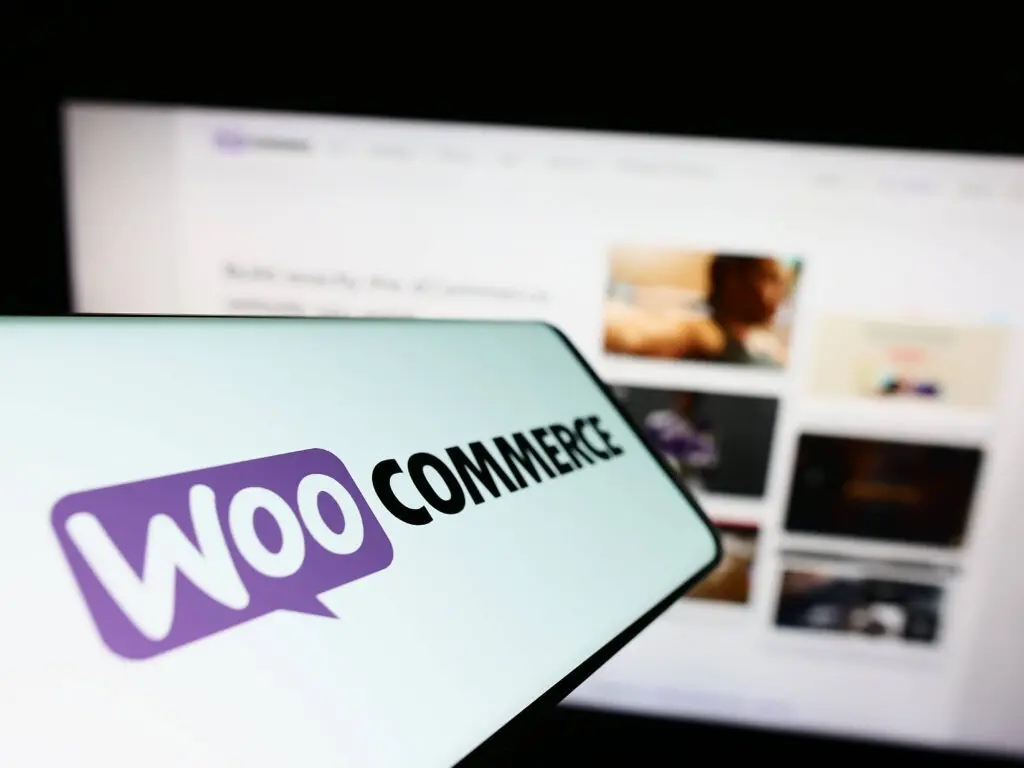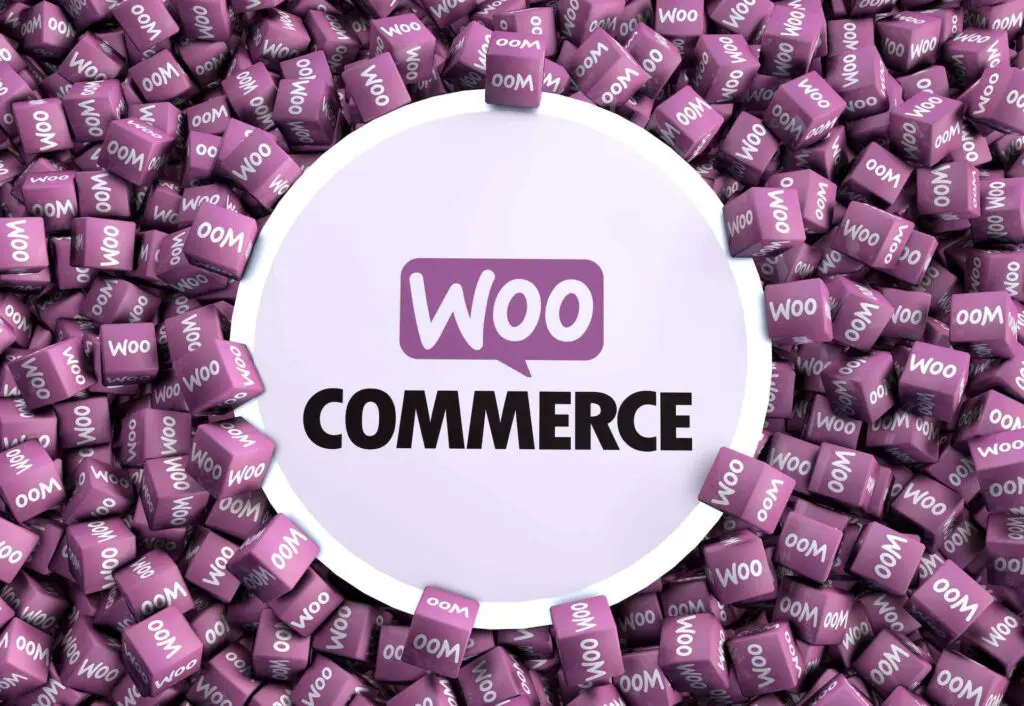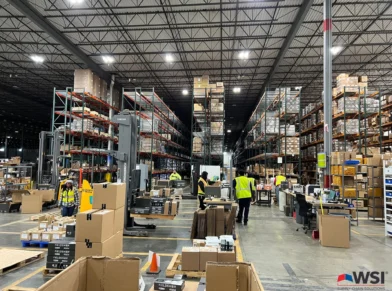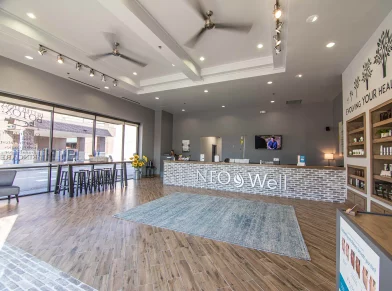What’s the Difference Between Shopify and WooCommerce?
WooCommerce vs Shopify is a showdown between two popular ecommerce platforms that are so alike yet so different.
On the similarities front, we can agree that both platforms happen to;
- Help SMBs and enterprises set up online stores.
- Provide built-in inventory management, marketing, SEO, payment, and order fulfillment features.
- Come with customizable website themes.
- Support a wide range of extensions.
- Facilitate code-based and non-code website building.
Conversely, the differences between Shopify and WooCommerce are not as general. They only become apparent when you dive deeper and then closely juxtapose the intricacies between WooCommerce vs Shopify architectures.
Now, that’s exactly what we’ll be doing for the next minute or so. You can go ahead and follow along as we explore all those finer features that make Shopify and WooCommerce so different from each other. By the time you’re done, you’ll have made an informed decision and settled for either WooCommerce or Shopify as the best ecommerce platform for your online store.
Main Difference Between WooCommerce vs Shopify
The primary difference between Shopify and WooCommerce lies in their structure. Shopify is an all-in-one, fully-hosted, closed-source ecommerce platform, while WooCommerce is a self-hosted open-source plugin for WordPress-powered online stores.
“All-in-one” here means that Shopify is an end-to-end solution. In addition to ecommerce functionalities, you’ll get a site builder along with web hosting, domain registration, and technical maintenance services.
WooCommerce, on the other hand, is offered as a free WordPress plugin. It’s only after you’ve installed it on the CMS that you’ll have access to its ecommerce functionalities.
Navigating the Features: A Beginner’s Look at WooCommerce vs Shopify Ease of Use
Getting started

To use WooCommerce, you need to purchase a WordPress hosting package from a third-party web host. Then on installing WordPress, you can proceed to set up WooCommerce just like any other WordPress plugin. That’ll transform your CMS framework into an ecommerce platform, complete with store building, inventory management, and payment processing capabilities.
WooCommerce itself is compatible with all the popular WordPress page builders. So, you should be able to visually design an online store using a drag-and-drop editor.
But, that notwithstanding, WooCommerce’s biggest highlight is its open-source architecture. This is what gives WooCommerce developers the privilege to extensively customize the platform’s underlying source code.
The same level of freedom applies even to scaling. You get to expand your store’s capabilities by integrating prebuilt plugins, setting up custom extensions, or upgrading your web server.
Shopify, on the other hand, is not as technical. It is, instead, engineered to make your online business journey easier, more seamless, and less demanding. You’ll, for example, appreciate that the platform takes care of all the essential website services – such as web hosting, domain registration, web security certificates, and so forth.
Even Shopify’s site builder itself is user-friendlier and more intuitive than WordPress page builders. But, you won’t have access to the underlying source code. Shopify developers only get to edit their theme code.

Themes and customization
Speaking of themes, WooCommerce boasts an overwhelming array of prebuilt offerings – 73 free and paid options in the WooCommerce Theme Store, plus tens of thousands more from external marketplaces – and WordPress development specialists.
Shopify too comes with a theme store, which offers a collection of about 100 paid and free website templates. Users can otherwise import more from external marketplaces – but the options are not as many as WooCommerce’s. On the flip side, however, Shopify’s themes are easier to customize, even though the editing options are a bit restrictive.
Plugins and integrations
The two ecommerce platforms are additionally accompanied by a series of prebuilt app integrations. But, just like website templates, the volume of options differs quite significantly between Shopify and WooCommerce.
Shopify’s App Store holds over 8,000 free and paid applications, while WooCommerce is compatible with about 800 extensions from its Woo Marketplace, plus over 60,000 more from the WordPress plugin directory. This, of course, translates to more flexibility for WooCommerce users.

Setting Up Your Online Store: A Side-by-Side Comparison of WooCommerce and Shopify
Inventory management
Both WooCommerce and Shopify have powerful inventory management capabilities. But, while Shopify tries to make the whole process seamless, WooCommerce is designed to offer you unlimited flexibility.
Shopify comes with a very intuitive system for setting up products and services, as well as coordinating subsequent orders and customers. You should be able to add single and bulk records of orders and customers, track stock, automate purchase orders, generate revenue reports, and so forth.
WooCommerce, on the other hand, is perfectly suited for businesses with large inventories. There are no restrictions on the product attributes, categories, and reports that you can create and manage.
Marketing, SEO, and promotions
When it comes to marketing, the WooCommerce vs Shopify battle generates mixed results. WooCommerce is slightly superior in SEO capabilities, but then loses out to Shopify in conversion campaigns and overall simplicity.
That’s not to say Shopify is poor in search engine optimization. Its default platform is optimized nearly as much as WooCommerce’s. Not only does it automatically generate XML sitemaps, but you also get a built-in blogging platform along with basic controls for tweaking on-page SEO settings – including title tags, meta descriptions, URLs, and alt text.
The only problem is, Shopify’s URL structure is rather rigid and not as customizable as WooCommerce’s. At least on the WordPress ecommerce platform, you can alter anything and everything about your on-page SEO attributes.
Shopify, however, makes up for that with built-in email marketing tools. You should be able to send out automated emails to engage leads, recover abandoned carts, retain customers, etc. WooCommerce only offers such capabilities through third-party email marketing plugins.
Payment processing

Whereas WooCommerce vs Shopify match up on the list of payment gateway integrations, Shopify is the only one that comes with a built-in option. Shopify Payments is the name and it processes payments from credit cards and debit cards, as well as digital accounts such as PayPal, Amazon Pay, and Apple Pay.
The only issue is, it only supports sellers from selected regions. And if you otherwise settle for an alternative payment gateway, Shopify will deduct extra fees above the standard transaction charges – unlike WooCommere, which lets you ride on your preferred third-party options without levying ‘penalties’.
Difference Between Shopify and WooCommerce Costs
WooCommerce itself is a free open-source ecommerce platform – but, in the end, it might end up costing you way more than Shopify. The bills here begin with web hosting, after which you might have to hire a WooCommerce developer to customize the entire business ecosystem. WooCommerce themes and plugins will also cost you money, as many of the well-developed ones happen to be premium.
In contrast, Shopify offers a fully-hosted platform under a structured pricing schedule. You could purchase Shopify Basic for $32 a month, Shipify for $92 a month, Shopify Advanced for $399 a month, or Shopify Plus for $2,000+ a month.
Then since Shopify’s website builder is exceedingly easy to use, you won’t need any assistance from a web developer. Extra costs only arise if you choose to purchase a premium theme or app.
Wrapping Up: Which is Better Between WooCommerce and Shopify?
On comparing these differences between WooCommerce and Shopify, it’s safe to say that there’s no obvious winner in the WooCommerce vs Shopify comparison. Your choice between the two should rather be based on your technical skills, business needs, and online store capital.
Solopreneurs and small businesses, for instance, would be better off with Shopify. It’s cheaper in the long run, easier to use, all-rounded, and allows them to set up fully provisioned omnichannel stores without any technical coding skills.
Conversely, WooCommerce is best reserved for enterprises, as its open-source structure is flexible enough to accommodate their highly specialized business needs.
Why Your eCommerce Business Should Be Using Shopify
Amazon revolutionized the consumer experience when it launched in 1995, and 5 years later, about 20 percent of consumers in the United States were making purchases online. But that was the year 2000. That percentage had already exploded even before the pandemic created a world of tele-everything. Now, with consumers having grown even more accustomed to the convenience of direct-to-doorstep delivery of . . . well, whatever they want, it’s estimated that over 80 percent of US consumers are online shoppers. That’s great news for your eCommerce business! But it also means that your customer base now expects to be able to buy online easily . . . no muss, no fuss. Which puts the pressure on you to make the online shopping experience satisfying and simple. So, which eCommerce platform is your best bet? Let’s dig into some of the top benefits of Shopify.
Why use Shopify?
When it comes to creating the online shopping experience for your customers, your eCommerce business has options. Using Shopify as your eCommerce platform has numerous advantages. We’ll stick to the top three.
- It’s user-friendly. Shopify was created with a non-tech user in mind. It’s completely customizable and even the most non-tech-savvy user can choose a beautiful template and set up a stellar online store with ease. If you’re stuck, there are plenty of online tutorials to help you out!
- It offers easy-to-use app integration. Shopify has its own app store with thousands of apps that integrate seamlessly. Whatever your specific need—from shipping label creating to customer service—there’s a app for that.
- It’s SEO-friendly. Shopify takes into account the necessity of search engine optimization for your business and allows you to add and edit meta-tags, keywords, and alt-text as well as incorporating many SEO best practices into the platform automatically. Their analytics will also help you keep on top of conversions and give you the info needed to adjust your site to maximize sales.
Still not convinced? Let’s take a look at some companies that are taking advantage of Shopify!
Who uses Shopify?
Whether they’re using Shopify for eCommerce or a professional service business, companies that use Shopify tend to leave glowing reviews. And the industries served are all across the board. Some of the larger companies using Shopify? Kylie Jenner’s cosmetic brand, Penguin Books, Hyatt Hotels, and Red Bull. But Shopify is also created with small business in mind (and has helped numerous small businesses grow). They’ve also added numerous features during the pandemic to make Shopify even more attractive to small businesses. Check out a couple of unique small businesses that used Shopify to build their brand.
- Partake foods—created by a mom who had trouble finding snacks for her daughter who had multiple food allergies
- World’s Window—an in-person retail store in Kansas City that needed to move online fast during the pandemic—their new Shopify store was up and running in three days
While Shopify is incredibly SEO-friendly, the best optimization is never set-it-and-forget-it. SEO is an ongoing process that takes place both on and off your website. Brining in digital marketing experts, like Globe Runner, can give your small or large eCommerce business the boost it needs. Globe Runner’s Shopify experts are more than familiar with the platform and all the ins and outs of how to make Shopify work for you. Check out how Globe Runner helped Jerky Dynasty drive consumers to their eCommerce store using targeted blogger outreach.
Frequently Asked Questions
Why is Shopify good for business?
Shopify was designed with flexibility and ease in mind. With hundred of templates and thousands of apps to integrate into your online store, Shopify can help you launch your new eCommerce business and grow your already growing business. Consumers want to do their shopping online, and Shopify is a simple and beautiful solution for businesses big and small.
Why do customers like Shopify?
Customers love the reporting capabilities once their store is up. The analytics gives business owners the information they need to tweak their site and increase sales. When building the site, users love the templates and how user-friendly the entire platform is. And with multiple plan options, Shopify will grow right alongside your business!
What makes Shopify different?
At the end of the day, Shopify is the most complete eCommerce solution on the market that has the most features. It’s flexible and offers everything you need to get your online store up and running without needing an advanced degree in web design.
Is Shopify safe?
Absolutely! Over half a million businesses use Shopify and they highest security standards in place to keep their customers (and your customers) protected.
Shopify and SEO: Avoid These Common Shopify SEO Problems
Chances are, no matter how niche your product is, there are dozens—if not hundreds or thousands—of competitors out there in direct competition with you. And if your product is less niche—say you’re selling shoes or kitchen utensils, the competition can be fierce, and breaking through the web noise to get your eCommerce page at the top of Search Engine Ranking Pages (SERPs) won’t happen passively. Sure, you may have the most amazing product on the market, but if no one knows about it, your sales won’t reflect your amazingness. Nonetheless, many eCommerce site owners neglect Search Engine Optimization (SEO) to the increasing detriment of their bottom line. With 40% of eCommerce traffic coming from online search, investing in SEO for your eCommerce site is not an optional feature. It’s a necessity—assuming you want to keep up with (and pull ahead of) the competition.
Unfortunately, many eCommerce retailers assume that building their shop on an eCommerce platform like Shopify means they don’t have to worry about SEO. In fact, it’s exactly the opposite! While Shopify has many built-in features to keep it relevant and user-friendly, there are many ways to improve SEO on Shopify and some common pitfalls you’ll need to avoid along the way. Let’s delve into some of those pitfalls (and their solutions) to get you started on how to optimize SEO on Shopify.
Common Shopify SEO Problems
- Internal Product Links—Product URLs in Shopify can create SEO problems by setting up internal links that go to the wrong URL, and the same product having multiple URLs. Unfortunately, this leads to one product being indexed multiple times by search engines. Luckily, the quick fix to this issue is to go into your themes and modify them to point directly to your product pages. However, this has to be done manually. And, after fixing your product links, you may find that your breadcrumbs are broken and you’ll have to set those manually as well.
- So. Many. Pages.—One of the larger SEO pitfalls for Shopify is that many of the extremely useful functionalities when it comes to organizing your products and your customers being able to filter them to easily find products end up creating unnecessary and content-thin pages that can be detrimental to your SEO strategy. This includes product tags, collections, blog tags, and product types and variants. Luckily, there is a fix! But, like most Shopify fixes, it has to be done manually and can be time-consuming. Setting these links to “noindex, follow” in the theme.liquid file will ensure that crawl time is not wasted by indexing redundant pages.
- Third-Party Apps—There seems to be a never-ending number of third-party apps available to integrate into Shopify to give your eCommerce store pretty much any functionality you can imagine. However, the vast majority of these app developers care little about how their app may affect the overall search engine rankings of your site. Be sure to carefully test and analyze any third-party app you’re considering using to see how it affects your Search Engine Ranking Pages (SERPs).
While there are some other frustrating issues with Shopify that don’t have fixes or workaround, many of the issues do have solutions. They are, however, frequently fairly technical fixes. One of the reasons Shopify is so popular is because it’s easy to use regardless of your technical expertise—which can make some of the SEO fixes a little overwhelming! Luckily, there are professional SEO agencies that have Shopify specialists. Globe Runner provides advanced expertise in all things SEO—and that includes your Shopify eCommerce site.
Why Globe Runner?
When it comes to SEO and Shopify, Globe Runner is your one-stop-shop! From our experts in content marketing to both on- and -off-page search engine optimization, Globe Runner is rocket fuel for your eCommerce business. From ensuring each of your product and category pages are effectively optimized for organic search to effective link building, Globe Runner can take your eCommerce site to the next level and help you turn customers into loyal brand ambassadors. Check out some frequently asked questions about SEO for Shopify and then get in touch about using SEO on your Shopify eCommerce site to help your product sales take off!
Frequently Asked Questions
Do Shopify tags affect SEO?
While product tags are an extremely useful Shopify tool to organize your shop and help your customers filter and find what they’re looking for, they can create problems for your SEO strategy. The issue? Shopify creates a new page every time you tag a product. This can lead to duplicate content pages as well as wasted crawl time if you haven’t ensured that those duplicate pages are not indexed. Without taking measures to avoid that indexing, product tags can end up negatively affecting your page rankings across search engines.
Do Shopify stores rank on Google?
Absolutely! At the end of the day, Shopify is just a platform you’ve used to build your eCommerce site. Search engines, including Google, don’t care what platform you’ve built your site on; they care about what’s on your site and in that code. If you’re following SEO best practices on your Shopify site, you’ll rank on Google—and if you’re not ranking where you want to be, it’s your optimization, not your platform. If you aren’t seeing the results you like, consider having a professional content marketing agency with experts in Shopify SEO audit your site and recommend changes to improve your rankings.
Does Google favor WordPress?
Rumors have abounded for years that Google has a heavy bias in favor of WordPress websites. The truth is that Google and other search engines don’t really care about what platform you’re using to build your website. So, why the misconception? Well, to begin with, WordPress is an incredibly popular platform. Over 40% of total websites on the internet are built with WordPress. With that kind of market share, it may sometimes appear that all the top rankings go to WordPress sites—when it’s really just that there are so many WordPress sites to begin with that they’re bound to show up more frequently. Which leads to the second part of why it seems that Google loves WordPress so much . . . WordPress, as a platform, is incredibly SEO-friendly and has many SEO best practices built into the platform, leading in part to its popularity and the ability to rank higher on Search Engine Ranking Pages (SERPs) by doing less than you might have to do to optimize your page on other platforms.
Is Shopify good for SEO?
Shopify has many SEO features built into the platform, like being easily mobile-friendly and automatically generating XML sitemaps. And, while there are some SEO limitations to being a closed platform, Shopify is one of, if not the, easiest to optimize eCommerce platforms available. However, it’s important to remember that SEO is not about your platform and is never a set-it-and-forget-it endeavor. Consistent optimization of your site—whether it’s on Shopify or another platform—is necessary to keep you on top of the SERPs.
Is Shopify blog good for SEO?
Blogs, whether on Shopify or not, are an important part of content marketing and SEO. Professional content marketing agencies, like Globe Runner, can assist you with making sure your blog strategy enhances your search engine rankings by conducting in-depth keyword research, gap analysis, and competitor research while ensuring every single blog is optimized for the best performance.
Part 2: How Does Instagram’s 2022 Algorithm Affect Your Business?
Part 2: How to Reach More People on Instagram
How can your business get more views on Instagram? Don’t worry, you don’t have to be camera-ready. You can even wear your pajamas to work, as long as you take the time to read our two-part series about Instagram’s 2022 algorithms. Part 1 explained Instagram’s algorithm for the feed, Stories and Explore pages, and for Reels and Instagram TV. If you missed it, we suggest you go back and read it so you’ll have a better understanding of the information we’ll present here in Part 2.
Tips for Using Instagram’s Algorithms to Get More Views
In Part 1, you read that Instagram’s 2022 algorithms use data that measures post information, poster (the person or business who posted) information, user activity, and interaction history. In other words, they basically boil down to one question: How likely is the user to be interested in the post? That makes sense, but how do you use your newfound 2022 algorithm knowledge to get views on Instagram? We’ve got a few tips:
Content Creation Tips
Take a long hard look at the content you’ve been posting.
- Does it solve a problem for your viewers?
- Entertain them?
- Engage them in an industry-relevant discussion?
You don’t need to answer all of those questions affirmatively, but if you can’t say yes to at least one, you’ve got work to do.
Make it easy to engage. Encourage direct action with:
- A CTA button (when appropriate).
- Interactive stickers. Polls, questions, emoji sliders, locations, quizzes, hashtag stickers, countdown clocks and more—there are stickers that fit almost any post. Check out this Shopify Post for a breakdown of types and how best to use them.
- Hashtags. They help people find you and share you.
- Captions. Write captions that prompt viewers to take action. Ask them to answer a question, tap if they agree with your post, or tag other viewers.
Change up the form of content you post. Try:
- Sharing Instagram Reels. These 15-30 second videos are easy to create and are more likely to get your post added to the Explore page, where you’ll gain exposure to new viewers. Instagram’s 2022 algorithm also favors its newer features, like Reels, so you’ll up your chances of being seen.
- Producing longer video content. Share non-Reel videos on Instagram TV (formerly IGTV). Surveys indicate that video increases sales, ROI, brand awareness, and time spent on related websites.
- Creating carousel posts. According to HootSuite, Instagram carousel posts get 1.4 times more reach and 3.1 times more engagement than regular posts.
- Use eye-catching graphics and motion. You’ll grab more attention.
- Highlight your location. Posts with tagged locations get 79% more engagement than ones without.
Relationship-Building Tips
Comment on others’ posts. Who do you want to follow you, share your posts, and/or become your customers? Once you learn who they are, follow, comment, and share their posts.
That includes the big dogs. Sure, commenting on a Nike post doesn’t mean they’ll reciprocate, but it does put the name of your shoe store in front of your target audience.
Share others’ content about your brand. If people are talking about you, your company and/or your brand, share the posts in Stories, and don’t forget to tag them.
Don’t forget to respond to comments. And do it as soon as possible, to create social proof, increase engagement, and just to be polite.
Consider timing. Figure out the best time to reach more people on Instagram with the help of their Analytics report, which will show you when your targeted viewers are most active. (Look in Insights, under Audience). Chat. Send messages to people you particularly want to engage with. Make sure to be genuine, and not too sales-y. Before messaging, ask yourself, “What’s in it for them?” (A good question to ask yourself when dealing with almost anyone about almost anything.)
Posting Tips
Post Stories often. By doing so, you’ll put your brand in front of people as soon as they hop on Instagram.
Share across feeds. Share Reels to your feed. Share your feed posts to Stories. Share previews of your Instagram TV videos to your feed.
Repost former posts to Stories. Did you know you can do this? What a great way to make sure your audience sees important contentEmbrace the new. As mentioned earlier, Instagram’s 2022 algorithm favors content posted on its newest features. Stay up-to-date and be an early adopter.
Instagram FAQs
Still have questions about how to get views on Instagram? We’re here to help.
- What is a good reach rate on Instagram in 2022? The average Instagram engagement rate is 4.7%. We suggest you aim higher than the average, remembering that smaller brands/accounts can get better reach rates than large brands with lots of followers. For example, Kazakhstan beats out all other countries with an Instagram reach of 78.7% of its population. Small can be good.
- What is a good engagement rate for Instagram in 2022? Engagement rates vary depending on the number of followers you have and how active they are Most analysts seem to agree that a good engagement rate is somewhere between 1-5%. Again, smaller accounts can (and should) get better engagement rates than large ones.
- Why are my hashtags not working in 2022? Though there’s been a lot of talk about shadow-banning, it’s more likely you’re using hashtags that are:
- Too broad.
- Too competitive.
- Unrelated to your posts.
- Banned. You’d be surprised at some of the hashtags that have been banned (like “workflow”). Search for “banned hashtags” to keep on top of the latest news.
It could also be the way you’re using hashtags.
- Don’t delete and re-add hashtags too often.
- You may be using too few or too many hashtags. While there’s an everchanging debate about the “right” number of hashtags, it’s really up to you to figure out the number that will resonate with your audience.
- You may come off as spammy or sales-y. Remember to ask yourself that good all-purpose question: “What’s in it for my viewers?”
One more FAQ: How can I do all of that well, keep up on trends and new features, and make sure I’m using the right number of non-banned hashtags? Well, you can work late, or you can work with us. We’ve got the time and the expertise to help you reach more people on Instagram. We’re good at our business. Let us take care of yours. Contact us today.
DIGITAL MARKETING TRENDS TO FUEL 2018: Q3
Part 3 of a quarterly digital marketing guide from our agency experts.
Is there such a thing as crystal clear digital marketing? We like to think so. That’s why all of us at Globe Runner map the digital landscape so closely. We have eyes in every corner of the internet, from SEO and Social strategies to PPC and web dev.
Whether you’re looking for some quick and clean lead generation or want to drive more traffic to your website, staying informed is mission critical. That’s why we do a deep dive with our hive mind once every few months, cataloging the digital marketing terms and trends rocketing our clients ahead of the competition.
Here’s your digital dose of everything fueling 2018 marketing trends in Q3:
Technical SEO/Link Building
1. Priority hints for page loading.
Soon developers will have the ability to give extra weight to the assets that are high-priority. Be it headers or images, soon Chrome Beta will allow values to be keyed to the code itself.
2. Removal of secure lock in chrome.
Used to be one little lock symbol was the best if only way to tell whether a website was secure (denoted by the ‘s’ in HTTPS). But now, secure sites are the rule, not the exception and you need an HTTPS site to rank on Google. As of September, Chrome 69 won’t be using the lock icon since SSL (secure lock layering) is the “new normal.”
3. New Google my business agency dashboard.
Earlier this month, local marketing agencies and local SEO managers got a productivity boost. Now, with the unlimited access to locations for each of their accounts, SEO pros have the ability to manage listing invitations, move business accounts into location groups, control access and permissions, and improve search abilities all from the new dashboard.
Local SEO/Citation Updates

1. Menus.
Put your services and offerings into your sites menu page if you want to define your competition and refine your keyword targets. In just a few sentences, you can even help solidify your Google category since Google My Business (GMB) is allowing local businesses more varieties to link to a menu URL.
2. FAQ Pages.
Whether you field a lot of frequently asked questions in person or online, a Q&A section helps Google and your customers understand what your business does, what it doesn’t do, and specifies your services. GMB administrators will also see new attributes listed.
For example, car dealerships can now specify if they sell certified pre-owned vehicles or brand new automobiles. Local businesses will see a Women-Led highlight feature. These attributes are sure to expand, so keep watch. Some in the future include same day service and free estimates or quotes.
Pay attention to the knowledge graph of your business, too. You’ll find it below reviews. One Dallas surgery clinic we work with has seen success using this area to answer questions about insurance, specific conditions, and treatments they offer.
3. Service Pages
Don’t have a service page on your website? Time to create one. This is your chance to speak in-depth about your offerings and lets you back them up with testimonials, case studies, or other rich media that can promote your brand.
You’ll also want to make sure and publish your services directly into Google My Business. The services section was added in April of 2018, but you have to be listed as an owner to see it.
Social/Content:

1. Snapchat cosmo after dark canceled.
The controversial channel was removed after only a week due to racy content and an outcry of parental concern.
2. Hootsuite updates.
You can now schedule, create boards, and post directly to Pinterest from the Hootsuite dashboard. No workarounds, just full integration.
Additionally, both Facebook and Instagram are changing the way partners, like Hootsuite, access data.
Want more tools to track mentions of your brand? Hootsuite Explore is hot on the case!
3. Thumb-stopping content.
The necessity for a reduced amount of text should be substituted with bolder, shorter wording and eye-catching visuals. Essentially, fewer words create a stronger impact. Focus on creative, visual content!
PPC

1. Import feeds with Bing Ads update.
Recently, Bing launched the ability to import product feeds from Google Merchant Center into Bing Merchant Center.
From the new Import tab in Bing Merchant Center (BMC), advertisers can sign into their Google Merchant Center accounts to pull in feeds directly. There is NO more having to upload product feeds to two separate places.
2. Google AdWords comments expanded.
Similar to Google Analytics annotations; Notes are now available at the account, campaign, and ad group levels in Google AdWords. This helps when changes are made that can affect results and allows for easier recollection to help understand why a metric may have gone up or down.
3. Bing Ads Editor now has the ability to add labels for MAC users.
(An added bonus PC users have been enjoying for years.)
4. In-market audiences debut.
Google first announced plans to release In-Market Audiences for search campaigns back at Google Marketing Next in May of last year. This month, Google and Bing rolled In-Market Audiences for Search out to all US advertisers.
Website/Development

1. Shopify sites.
The hosting platform is on fire right now with requests for e-commerce builds reaching a fever pitch. It’s a closed source system, but pretty user-friendly, and even handles a lot of the fulfillment legwork for you.
2. Fantasy.
For anyone following pop culture right now, you know Game of Thrones. It’s all about the mythical creatures, fantastical landscapes. In terms of the music, it’s epic orchestral music, and everybody is really excited about getting beyond the normal.
3. New Minimalism.
A lot of people will think about minimalism being a Scandinavian design concept with clean and crisp lines with lots of white. But now it’s still clean, but with more bold and vibrant colors and fluid styles.
4. Space.
With shows like Strangers Things and movies like Star Wars, the idea about space is that the future is now. We’ve got the field of robotics that is seemingly taking over our jobs and our careers, as well as automated cars that can function without us. People are really starting to explore this in their creative platforms.
Photography \ Creative

According to Getty Images, this year’s emerging visual trends are easy to spot in digital and social marketing campaigns.
For centuries, males have had their emotional complexity reduced to one problematic expression: anger. Now, images and ad campaigns are expanding stringent male stereotypes in an invitation for them to experience their full range of emotion. In other words, emoting males are the new normal.
Whether snaps are candid or carousel ads, those that gain the most traction are diverse, authentic, and inclusive. Many successful accounts and musicians are reimagining classical artworks and long-standing themes with traditionally underrepresented communities. An admonition to advertisers who have previously relied on whitewashed, homogenous campaigns – time to diversify.
Focuses on “authentic visual storytelling” (ie: images that are at once relatable and realistic). Be it through distortion, exaggeration, or reality-based imagery, we see, once again, strong social commentary leveraged to dislodge social milieus – like female menstruation – that were once taboo in the ad world.
Need a little help with your digital marketing launch? Let us send you into the stratosphere.











